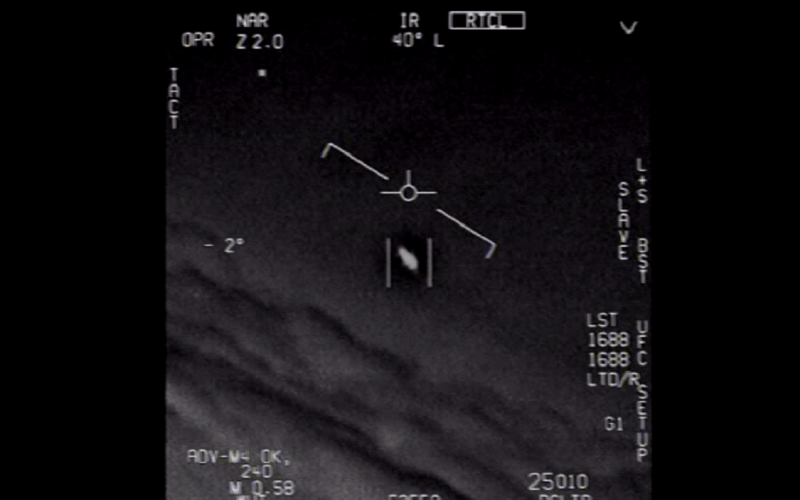A new batch of photos and videos of “unidentified aerial phenomena” that had been leaked to the public was confirmed as legitimate by the US Department of Defense (DoD). The sightings took place in 2019 and were recorded by US Navy personnel.
The footage was allegedly taken during an incident in which US Navy warships USS Omaha and USS Russell were buzzed off the coast of California by a highly coordinated swarm of flying vehicles. The event was recently confirmed by Admiral Michael Gilday, the United States Navy Chief of Naval Operations.
It is the second time in less than a year that the DoD acknowledges the legitimacy of leaked “UFO” footage. In April 2020, three videos, entitled FLIR, GOFAST, and GIMBAL, captured by F/A-18 fighter jets of the U.S. Navy in 2004 and 2015, were declassified. Shortly after, in August 2020, the Pentagon launched an “Unidentified Aerial Phenomena Task Force” to investigate such material.
An identified threat
The Pentagon insists it takes such sightings very seriously. “For many years, our aviators didn’t report these incursions because of the stigma attached to previous terminology and theories about what may or may not be in those videos,” a Navy spokesperson commented.
But some are worried that these “UFO” sightings hide an ugly truth: that the US military is struggling to protect its assets. “This is a blind spot we ourselves literally created out of cultural taboos and a military-industrial complex that is ill-suited to foresee and counter a lower-end threat that is very hard to defend against,” argued Tyler Rogoway of The War Zone.
Very early after their appearance on the market, commercial drones invited themselves to the battlefield. In 2014, the Islamic state was already using civilian versions (Phantom 3 or 4) for reconnaissance. Then came the suicide drones, fitted with makeshift grenades. While the United States used to have a quasi-monopoly on offensive UAVs at the beginning of the 21st century, countries such as China, Russia, and even Iran have since bridged the gap.
On April 1, 2021, the Chinese company Zhongtian Feilong unveiled a new “unmanned airborne swarm system”. This large vertical take-off and landing (VTOL) “mothership” drone is capable of releasing several smaller, unmanned aircraft systems (SUAS) fitted with a modular payload to undertake missions such as reconnaissance or loitering munition (or “suicide drone”.)
The latter have proved themselves particularly capable during the recent conflict between Armenia and Azerbaijan in Nagorno-Karabakh in November 2020. Open-source information suggests that over 59 Armenian vehicles ranging from trucks, artillery units, and even tanks, were destroyed using Israel-produced loitering munitions that Azerbaijan acquired between 2014 and 2019.
Conscious of the threat posed by such inexpensive and easily accessible aircraft, the US DoD awarded a contract through the Defense Innovation Unit (DIU) to the company Fortem Technologies, which specialized in solutions to secure sites at risk from drone threats.

